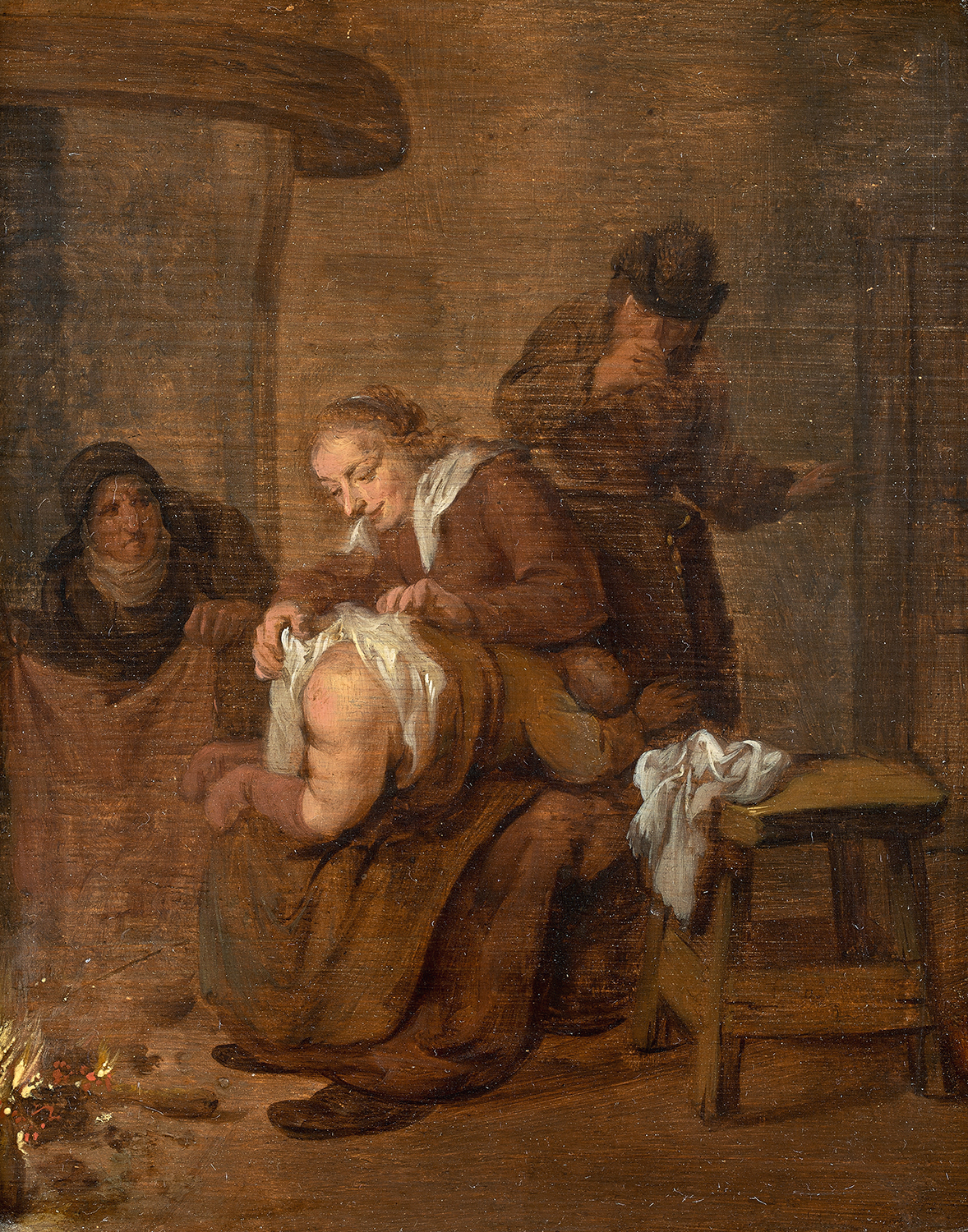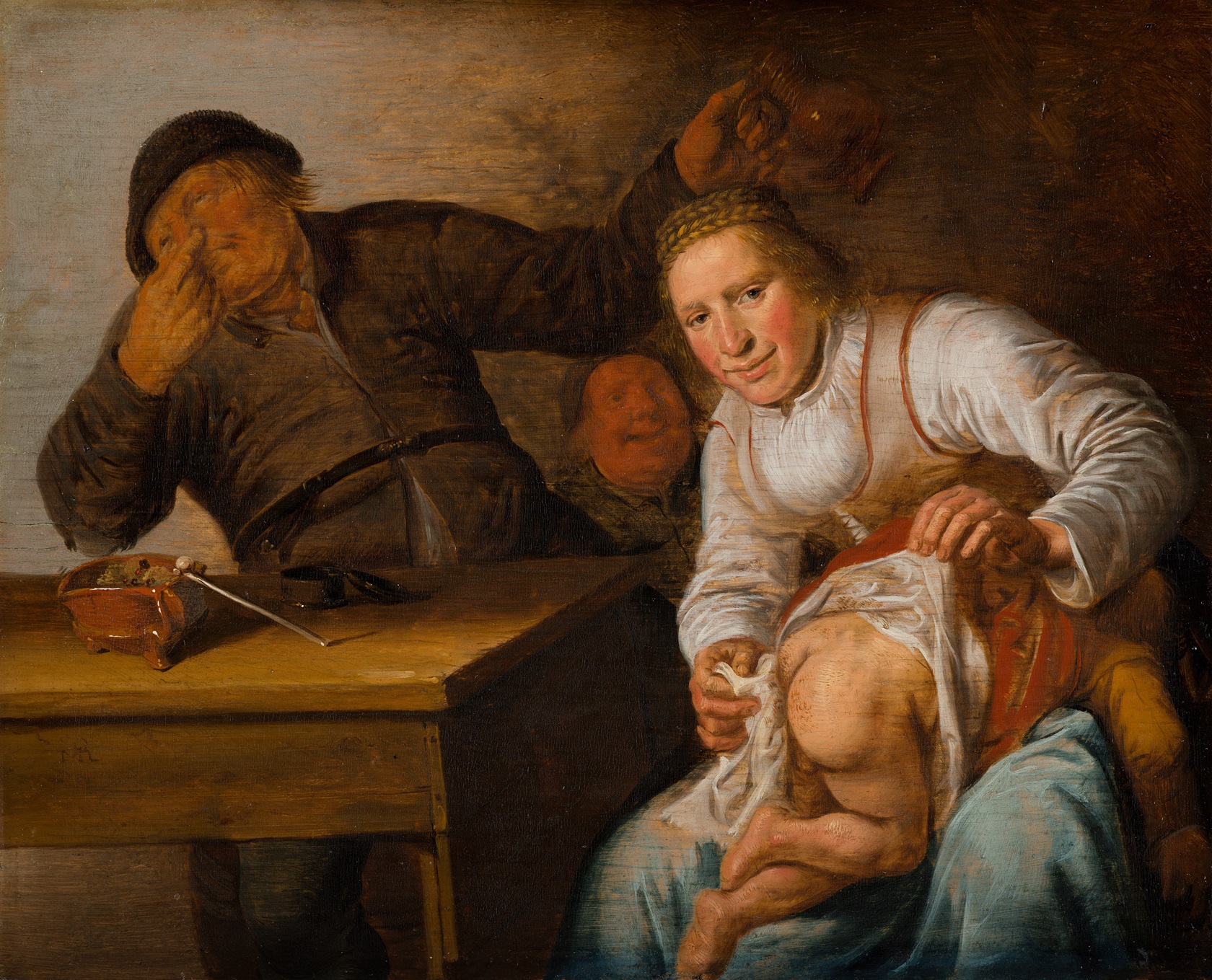Jan Miense Molenaer (Haarlem 1609/10 – 1668 Haarlem)
Jan Miense Molenaer (Haarlem 1609/10 – 1668 Haarlem)
An Allegory of Smell
Oil on panel, 19.5 x 16 cm (7.7 x 6.3 inch); presented in an ebonised frame of Dutch 17th century model
Provenance
Private collection, France
***
Jan Miense Molenaer was born in Haarlem around 1610 and is thought to have been trained by the great Frans Hals, who had an active studio in Haarlem which accommodated many students.1 He married the painter Judith Leyster (1609–1660) and shared a studio with her. Leyster had also been taught by Frans Hals and adopted his loose technique; she is considered the most talented female artist of the Dutch Golden Age. The influence of Hals remained strong with Leyster, but Jan Miense was more influenced by the Fleming Adriaen Brouwer, who introduced the peasant genre in Holland, and who is also thought to have been active in the studio of Hals. Peasant life had been invented as a subject for painters in Flanders by Pieter Brueghel in the mid-16th century.
Scenes from peasant life were highly popular during the middle of the 17th century, especially in Haarlem: they were considered highly amusing and were collected in the highest circles. Towards the end of the century the peasant genre fell out of favour as the more refined French taste was adopted in The Netherlands, but earlier in the century the Dutch had a particular love of depictions of the lives of the poorest members of society. The couple’s son, Jan Molenaer II, also became a painter, whose works are frequently confused with those of his father.
Molenaer is at his most amusing here, showing a mother cleaning her infant’s bottom. The figure at the right leaves no doubt as to the smells that accompany this intimate operation. Humerous depictions such as this were frequently part of a series of the Five Senses, in which this would have represented the Sense of Smell. One such series by Jan Miense Molenaer is preserved in the Mauritshuis Museum in The Hague, dated 1637, where the Sense of Smell is represented by a very similar scene of a woman attending to a child (fig.).2 However no comparable pictures by Jan Miense of the other four Senses of similar dimensions to our painting are currently known, so it is likely the present painting was not originally part of a set, but painted as an independent work. The loosely painted work would appear to date from the same early period as the Mauritshuis series, around 1635-1640. Two series of the Senses by Jan II also exist, one in the Musée Quimper in France and another in the Staatliche Kunsthalle in Karlsruhe, Germany.
The authorship by Jan Miense Molenaer was confirmed by Dr Fred Meijer upon examination of the original on 24th October 2020.
SOLD
1. For the artist, see I. van Thiel-Stroman, ‘Jan Miense Molenaer’, in: Painting in Haarlem 1500-1850. The collection of the Frans Hals Museum, Ghent/Haarlem 2006, pp. 241-245 and Dennis P. Weller a.o., Jan Miense Molenaer: painter of the Dutch Golden Age, exh. cat. Raleigh NC (North Carolina Museum of Art) 2002, passim.
2. Oil on panel, 19.5 x 24.3 cm, inv. no. 575; N. Sluijter-Seijffert a.o., Mauritshuis: illustrated general catalogue, The Hague 1993, cat. no. 575, repr.

